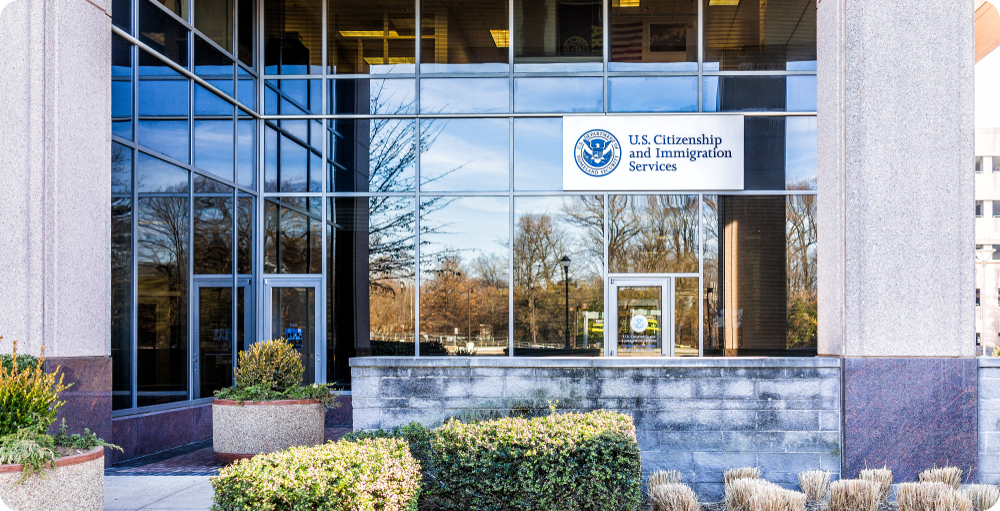The EB-5 Regional Center Program has expired. The program may be brought back to life — but the American economy will be better served if it isn’t.Yes, the Regional Center Program has helped stimulate commercial real estate development in the U.S. and had some economic benefits, but it never lived up to its mandate of creating permanent jobs and stimulating areas in need.And the program has been in the news over the years for all the wrong reasons including fraud, failed projects, improper supervision, abusing Target Employment Area regulations, and improper transaction-based compensation payments.The program should stay expired for one simple reason: A far more capable replacement program already exists.Since the summer of 2021, the original and permanent “direct” EB-5 program has been operating efficiently, and quietly fulfilling the mandate of the EB-5 program.
Regional center jobs weren’t really permanent, and many couldn’t even be counted
The original — and now only — EB-5 program requires that an investment is made directly into a business, and the jobs created can be determined by a company head count and verified by W-2s. These jobs are intended to be permanent and offer the potential to be career positions.By contrast, regional center job creation comes from construction jobs and economic modeling. Construction jobs must last two years to qualify as permanent jobs. But after construction is finished, there’s no plan to sustain these jobs. They’re not even striving to be permanent and they will never be career jobs.Regional centers also get the benefit of counting indirect jobs towards their EB-5 job-creation quota. An indirect job is one that represents a new supply company worker or contractor. Again, these are not career jobs — the extra supplier work is needed only for the amount of work the construction project creates. How this is deemed to be “permanent” is mystifying.Of course, it’s impossible to actually count the new supplier jobs, so economic modeling is used to determine how many supplier jobs are being created by the commercial real estate company expenditures.Regional centers also get credit for all induced jobs created, the new hires in the local economy that get created because of the extra spending of workers associated with the real estate development. All those construction workers need haircuts and sandwiches while working at a job site, so that results in induced job creation. Again, these jobs are seen as “permanent” by USCIS.And, of course, these induced jobs can’t be counted, and the magic of economic modeling is needed here too.So now the total jobs credited to the regional center, for immigration purposes, is far greater than the amount of construction workers working on a project that might last a couple years.This is a tough act for direct EB-5 projects to compete with — they can only count payroll jobs for the business receiving the investment. No barbers, no sandwich makers, no economic modeling. Just real, countable jobs that can be lifetime careers.
Equity investment is a strict program requirement, kinda
When Congress created EB-5 in 1990, it required that capital contributed by EB-5 investors be equity investments in growing U.S. businesses. This intelligent program feature would strengthen a business’ balance sheet by helping it avoid debt during its startup or growth period, which would also strengthen its position if it needed or desired to take on future debt.But someone from a regional center had an idea and was able to convince a Texas court that EB-5 investors should be allowed to make an equity investment into a shell company — thereby satisfying the equity aspect of the program — and the shell company would then loan the invested capital to a commercial real estate developer, who would act as the “job creating entity,” thus satisfying the job-creation requirement.With one court decision, the EB-5 Regional Center Program exploded, as commercial real estate projects could suddenly raise tens of millions of EB-5 dollars (one project raised over $1.2 billion) while providing immigrant investors an EB-5 investment with a repayment date.All in the name of “equity investing” to grow U.S. businesses.
Helping rural areas with a 50% investment discount never really happened
The idea of reducing the minimum investment requirement from $1 million to $500,000 was another good idea the Senate had, in theory. The discount was intended to incentivize investment in Targeted Employment Areas (TEAs), which are defined as rural areas or areas with high unemployment.However, the execution of this was a different story. Allowing states to decide which area was a high-unemployment-area, and which wasn’t, well, that didn’t work so well. The gerrymandering of maps was taken to an extreme when projects in Times Square, Manhattan and Beverly Hills managed to qualify for the TEA tag and raise money at the lower investment level. Perhaps they had to help out those struggling Beverly Hills folks who were reduced to shopping at Nordstrom instead of Louis Vuitton.
Your honor, I’d like to call our next witness
A random search of headlines about EB-5 will yield results with words like “SEC,” “misappropriation,” and “guilty.” Unfortunately, there are more stories about EB-5 fraud than there are of communities that were truly economically invigorated by the development of commercial real estate.On greencardbyinvestment.com alone, in just over two years, news stories feature at least 34 different EB-5 regional center projects involved with allegations of serious fraud. A search on the SEC website for “EB-5” produced 243 search results. They were all regional center cases — not a single result appears to be related to a direct EB-5 investment.Some politicians, like Senators Leahy and Grassley, know about the far too common linkage between regional centers and fraud. And, unfortunately, too many investors know about it, as fraud has often victimized unknowing applicants who were solicited en masse by regional centers for investments they didn’t understand.Some may say this is a one-sided perspective — what about the regional center economic benefits? Yes, a scan of EB-5 headlines will also turn up the odd article talking about the billions of dollars the Regional Center Program has raised. But I have a tough question for those who promote that narrative: Wouldn’t most of that commercial real estate development still have happened without cheap EB-5 capital? I believe it would have. And while we’re at it, where are those “permanent” jobs once the construction crews packed up and left?
If the original EB-5 program offers a better solution, why bother with reauthorization?
The EB-5 program of the past was very different than the program we know today. Today’s direct model of investing in an expanding business didn’t really exist until very recently; direct investments in prior years were small, family-run affairs, like franchise restaurants. Because they were very small investments, migration agents didn’t see the value in promoting them. And for investors who were looking for a more passive investment, starting their own business was a non-starter.Conversely, regional center investments surged in popularity largely because of their ability to host large-scale in-person events in foreign countries and the willingness of often unqualified migration agents to sell those investments to dozens of investors at a time.Direct investments in the past just couldn’t compete with the marketing brawn of regional centers. And they didn’t present any opportunity for agents to sell them.Well, it’s a brand-new world today. Fancy in-person events — or even migration agents — are not needed to sell direct EB-5 investments. Overseas investors can evaluate a wide range of EB-5 options with full due diligence online.Sectors popular with direct investors, like manufacturing and service centers, don’t have to be in a big and often thriving urban area. Location, location, location is the mantra of commercial real estate developers but it just doesn’t apply to businesses that build bathroom fixtures, or provide healthcare advice over the phone. These companies can be situated in rural and high-unemployment areas that truly need stimulus.The past six months have proven that the original EB-5 program design can succeed. Manufacturers are creating tens of thousands of new U.S. jobs. So are businesses that hire remote workers in remote U.S. locations to service the world.Smaller businesses can mean a lot to smaller communities. Let the mega real estate developers get bank money for the skyscrapers they are going to build anyways.
No reauthorization doesn’t mean leaving past investors out in the cold
Existing EB-5 regional center investors are stuck in limbo right now as their applications remain frozen due to the lapse of the Regional Center Program. The U.S. government has an obligation to live up to its end of the bargain: adjudication of the petitions of investors who invested and filed in good faith. To do otherwise, would be just plain wrong and would negatively impact our immigration reputation.Simple grandfathering legislation can protect those investors who filed their petition when the program was authorized. Take care of past regional center investors who acted in good faith and end the program with that.
Do the right thing for EB-5 and America — leave things as they are
The direct EB-5 program isn’t a shell game with shell companies. It’s real employment for businesses and communities that really need it. Let the politicians chew on that before signing a bill that brings back cheap capital for guys flying in private jets.It’s good for the EB-5 industry too. More diverse business models with smaller capital raises still need experts to navigate the Immigration Service minefield of complex requirements.Of course, there are losers. It’s been a good run, but flawed ideas eventually do fall away.Aside from protecting existing investors who invested in good faith, the government doesn’t need to do anything. Let the regional centers drift into memory. And give job-creating businesses in the U.S. the opportunity to raise direct EB-5 investment capital and help smaller communities that truly need economic stimulus.The Regional Center Program has expired. Long live EB-5 and real U.S. economic growth.








